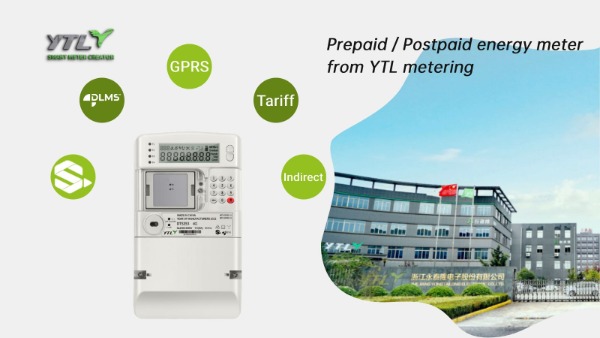Traditional energy meters are mainly used for energy measurement, while smart energy meters enhance this function by adding communication, data processing, prediction analysis, and self diagnosis. By real-time monitoring and analyzing the operating status of equipment, smart energy meters can self diagnosis and provide warnings to power companies, enabling them to take proactive measures to reduce the probability of failures, minimize unplanned power outages, and improve the reliability and stability of power supply.
Principle of implementation for smart energy meter self diagnosis.
1. Data collection and processing: Smart energy meters collect key parameters such as current, voltage, power factor, etc. of devices in real-time through high-precision measuring chips and sensors. After preprocessing, this data is further analyzed.
2. Feature extraction: Based on data preprocessing, smart energy meters can extract features that reflect the operating status of devices. These features include waveform analysis of current, voltage, detection of abnormal events, etc. Through the analysis of these features, the operating status of the equipment and potential fault modes can be determined.
3.Fault mode recognition: Based on the extracted features, the intelligent power meter uses machine learning algorithms for fault mode recognition. Common algorithms include Support Vector Machine (SVM), neural networks, decision trees, and more. These algorithms establish a mapping relationship between fault modes and features through learning and analysis of historical data, enabling prediction of future faults.
4.Early warning and notification: Once the smart electricity meter identifies potential fault modes, it will provide a warning to the power company based on the severity and urgency of the fault. The warning methods include local display, remote communication, etc. At the same time, the power company can also remotely access the operating status and warning information of the equipment through the interface provided by the smart electricity meter, in order to take timely measures accordingly.
Feedback control: After receiving the warning, the power company can remotely control or adjust the relevant equipment through the smart electricity meter based on the actual situation.
For example, adjusting the operating parameters of equipment, starting backup devices, etc., to reduce the risk of failures or mitigate the impact of failures.
The accuracy and reliability of smart energy meter self diagnosis
In order to ensure the accuracy and reliability of self diagnosis, smart energy meters need to have the following key elements:
 1. High-quality sensors and high-precision metering chips: smart energy meters are the foundation for collecting accurate data, providing more accurate and comprehensive information on the status of equipment operation.
1. High-quality sensors and high-precision metering chips: smart energy meters are the foundation for collecting accurate data, providing more accurate and comprehensive information on the status of equipment operation.
2. Powerful data processing capabilities: smart energy meters can quickly and accurately analyze and process large amounts of data to ensure the real-time nature of self diagnosis.
3. Advanced machine learning algorithms: capable of extracting useful information from historical data and accurately predicting future fault patterns.
Continuous calibration and optimization: Since the operational status of equipment is dynamically changing, smart energy meters need to be regularly calibrated and optimized to adapt to these changes.
4. Good communication skills: smart energy meters must send data to the power company to ensure the timeliness and effectiveness of warning information.
5. Integration of user feedback and on-site experience: Continuously absorb user feedback and on-site maintenance personnel experience to continuously improve and optimize the self diagnosis function of smart energy meters.
6. Multi-level verification and testing: Before actual implementation, it is necessary to conduct multi-level and comprehensive verification and testing of the self diagnosis function of the smart energy meter to ensure its reliability and stability during actual operation.
7. Regular maintenance and updates: For smart energy meters that are already in use, regular maintenance and software updates should be carried out to ensure the normal operation and accuracy of their self diagnosis function.
8. Data security and privacy protection: In the process of collecting, transmitting, and using operational data from devices, full consideration should be given to the security of the data and the protection of user privacy.
Encrypting and controlling access to data to ensure that smart energy meter data is not illegally accessed or misused.
9. Innovation and Research: Continuously monitoring the latest technologies and research trends in the field of smart grids and smart devices, innovating and upgrading the self diagnosis function of smart energy meters. Introducing new technologies and methods to improve prediction accuracy and reliability, meeting the constantly changing demands of the electricity market.

 English
English 中文简体
中文简体


.jpg?imageView2/2/w/500/h/500/format/png/q/100)
.png?imageView2/2/w/500/h/500/format/png/q/100)



-1.jpg?imageView2/2/w/500/h/500/format/png/q/100)

.jpg?imageView2/2/w/500/h/500/format/png/q/100)





